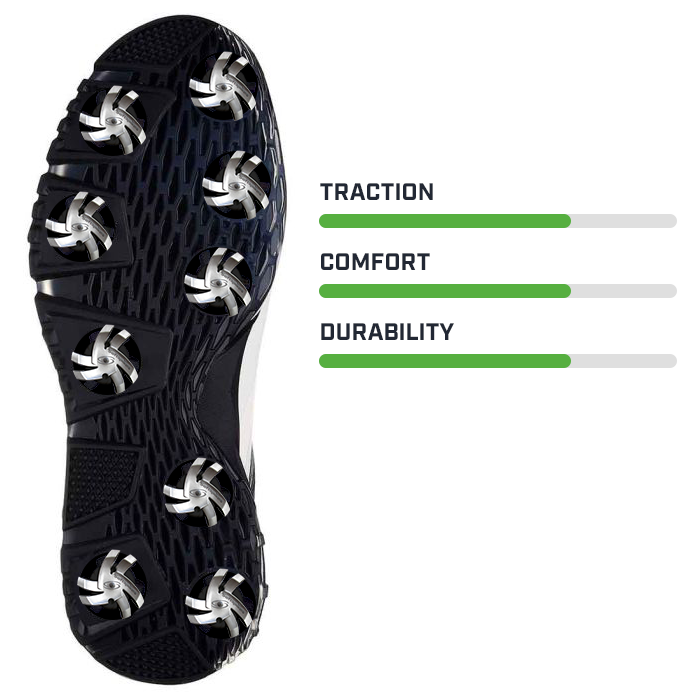The Ultimate Guide to Choosing the Perfect Spikes for Your Shoes
Introduction: Why Golf Spikes for Shoes Matter
When it comes to golf, the right equipment can make all the difference. Among the various components of a golfer’s gear, the golf spikes for shoes often go unnoticed but play a crucial role in performance and safety. The choice of spikes can impact your stability, traction, and overall comfort on the course. Whether you’re a seasoned pro or a beginner, understanding the importance of golf spikes for shoes is essential for optimizing your game. This guide will delve into the different types of spikes, their benefits, and how to choose the perfect ones for your shoes.

Types of Golf Spikes for Shoes
There are primarily two types of golf spikes for shoes: metal spikes and plastic (or soft) spikes. Each type has its own set of advantages and disadvantages, making them suitable for different playing conditions and personal preferences.
Metal Spikes: The Traditional Choice
Metal spikes have been a staple in golf for decades. They offer excellent traction and are particularly effective on firm or wet surfaces. However, they can be uncomfortable for walking long distances and may cause damage to golf course surfaces. According to a study by Purdue University, metal spikes can contribute to turf damage, which is why many courses have banned their use. Despite this, many golfers still prefer metal spikes for their superior grip, especially in challenging weather conditions.

Plastic (Soft) Spikes: The Modern Alternative
Plastic or soft spikes have gained popularity in recent years due to their comfort and reduced impact on course surfaces. They are designed to provide adequate traction without causing damage to the turf. Soft spikes are also more comfortable for walking, making them a preferred choice for golfers who spend long hours on the course. According to a survey by Softspikes, over 70% of golfers now use soft spikes, highlighting their growing acceptance in the golf community.

Factors to Consider When Choosing Golf Spikes for Shoes
Selecting the right golf spikes for shoes involves considering several factors, including playing conditions, personal comfort, and course regulations. Here are some key points to keep in mind:
Playing Conditions
The type of course you play on can influence your choice of spikes. For example, if you frequently play on wet or slippery courses, metal spikes may offer better traction. On the other hand, if you play on softer or more delicate turf, soft spikes are a more sustainable option. According to a report by the United States Golf Association (USGA), the use of soft spikes has helped reduce turf damage by up to 50%.

Personal Comfort
Comfort is a critical factor, especially for golfers who walk the course. Soft spikes are generally more comfortable and reduce the risk of foot fatigue. On the other hand, metal spikes can be more rigid and may cause discomfort during long rounds. According to a study by the University of St. Andrews, soft spikes can reduce foot fatigue by up to 30%, making them a more comfortable option for extended play.

Course Regulations
Many golf courses have specific regulations regarding the type of spikes allowed. Some courses prohibit metal spikes to protect their turf, while others may have no restrictions. It’s essential to check the course rules before choosing your spikes. According to a survey by the PGA, over 90% of courses now require soft spikes, reflecting the industry’s shift towards more sustainable options.
How to Install and Maintain Golf Spikes for Shoes
Proper installation and maintenance of golf spikes for shoes are crucial for ensuring their longevity and effectiveness. Here are some tips:
Installation
Installing new spikes is a straightforward process. Most golf shoes come with removable spikes that can be replaced using a spike wrench. Simply remove the old spikes, insert the new ones, and tighten them securely. For those unfamiliar with the process, many golf shops offer installation services.
Maintenance
Regular maintenance can extend the life of your spikes. After each round, clean your shoes and spikes to remove dirt and debris. Periodically check for wear and tear, and replace any worn-out spikes to maintain optimal performance. According to a guide by Golf Digest, replacing worn spikes can improve traction by up to 40%.
Conclusion: Making the Right Choice for Your Game
Choosing the right golf spikes for shoes is a decision that can significantly impact your performance and comfort on the course. Whether you opt for traditional metal spikes or modern soft spikes, understanding the factors that influence your choice will help you make an informed decision. By considering playing conditions, personal comfort, and course regulations, you can select the perfect spikes to enhance your golfing experience. Remember, the right spikes can make all the difference, so choose wisely and enjoy the game!

